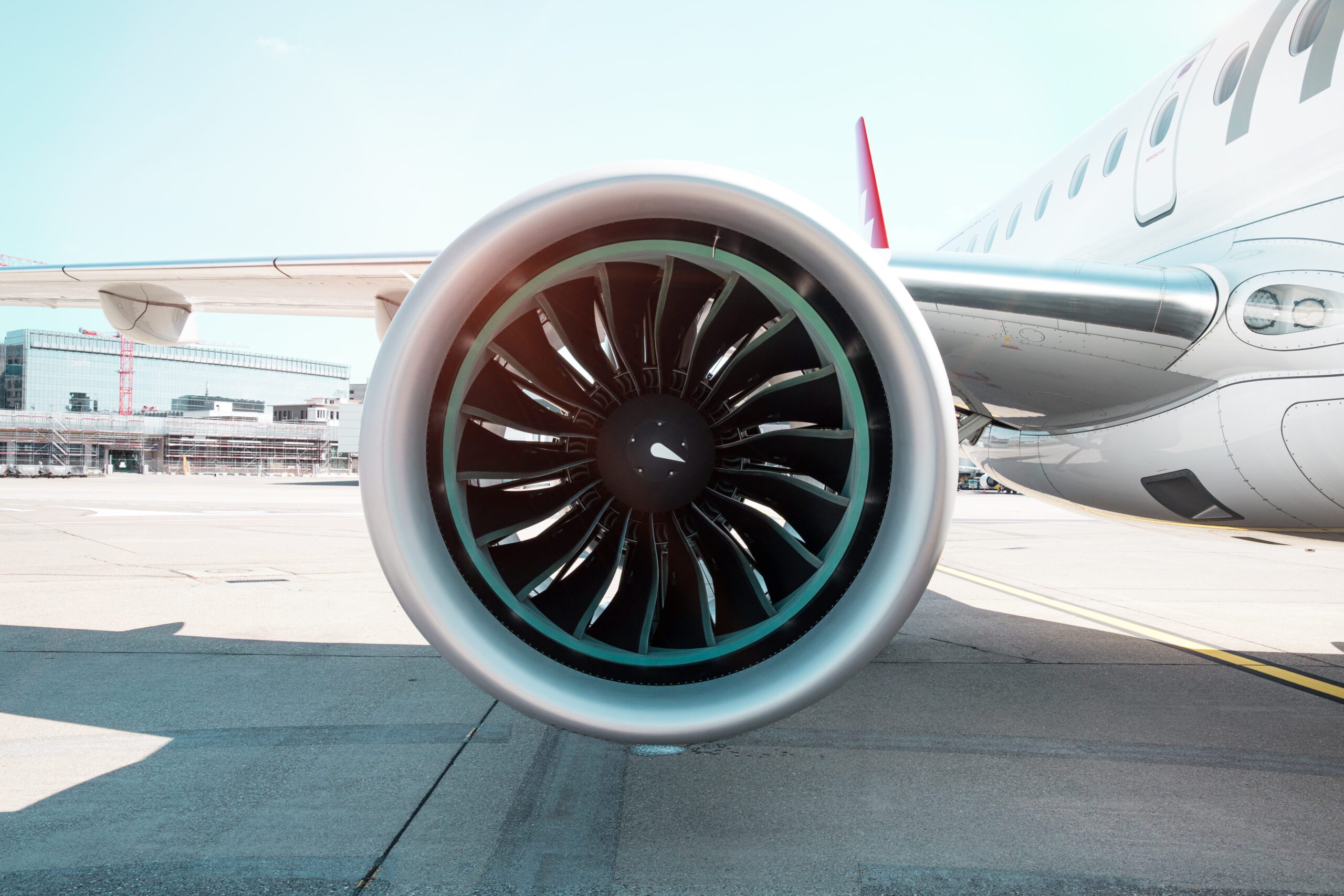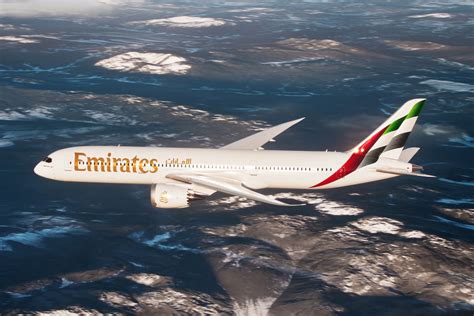
helveticairways flotte highres 4 scaled
It’s been a milestone without much fanfare except for a few tweets, but Pratt & Whitney has had something to celebrate recently: on January 25, the Geared Turbofan (GTF) has been in commercial service for five years on the Airbus A320neo. With Lufthansa, to be exact. In part 1 of our review, we recorded the numerous issues that have plagued the GTF in its first years. In part 2, we look at how airlines appreciate the engine and what the future might have in store.
In the first five years since it entered commercial service with Lufthansa on an Airbus A320neo, the Geared Turbofan-powered fleet has grown to over 940 aircraft with fifty airlines. Despite the dramatic effect of the Covid-crisis which has put many airliners in storage, Pratt & Whitney says that ninety percent of the GTF-fleet is currently in active service. Since January 2016, the engines have done 7.9 million flight hours and saved airlines a combined 400 million gallons (1.5 billion liters) in fuel and 3.8 million metric tons in carbon dioxide emissions.
P&W says it has over 10.000 orders and commitments for the GTF. It recently announced new contracts with Air France for engines for sixty A220s, which will be the first delivery of a new P&W engine to the airline in decades. Two airlines that are part of the Indigo Partners group also have been shopping with Pratt: Frontier for 134 A320neo-family aircraft and Volaris for eighty A320neo’s.
To keep these engines flying, a global network has been created that has grown to eighteen maintenance, repair, and overhaul centers. They offer EngineWise support, while EngineWise Intelligence tracks real-time data from each engine. That’s some four million data points per flight that are coming from a GTF.
Lufthansa satisfied by GTF performance
Airinsight asked a number of airlines what they think of the GTF. Not all responded to our questions, but we have a few key players that have given us their view. Like Lufthansa. The first operator of the GTF is satisfied with the engine, which currently powers 29 A320neo’s and six A321neo’s while subsidiary SWISS has three A320neo’s and two A321neo’s with P&W engines in its fleet. “The A320neo (with GTF) is now part of everyday life in Lufthansa flight operations and has become the backbone of the Lufthansa fleet in Frankfurt during the corona crisis. We are currently operating all neo aircraft out of Frankfurt. This means that the A320neo family is currently our largest fleet at Frankfurt Airport”, the airline says.
Lufthansa, too, has had its share of issues that had a negative impact on operations. It suffered in-flight shutdowns, low-pressure turbine, and high-pressure compressor issues that requested inspections or engine removals, especially in the first two to three years. “The initial major problems have now been largely resolved and performance, e.g. in terms of fuel consumption, is fine. We are currently working with the manufacturers to extend the service intervals, i.e. the time between two engine overhauls.”
“A lot of progress has been made in this area since the introduction of the aircraft type, but we are not yet at the level of the previous engine generations (CFM56-5B and V2500). Engine overhauls are the biggest cost item in terms of maintenance costs for the economic operation of aircraft, and this is where we are in dialog with Pratt & Whitney.”
Back in April 2014, so before it experienced the first issues with the GTF, Lufthansa selected the CFM LEAP-1A for the second batch of fifteen A320neo’s and 25 A321neo’s. “As things stand today, we expect to see the first aircraft with LEAP engines in the Lufthansa Group sometime next year.”
IndiGo is the biggest GTF-operator, with the engine to power about half of its fleet of A320neo-family aircraft in service or on order. The Indian airline also selected the CFM LEAP-1A for 280 neo’s. (Airbus)
IndiGo’s choice for LEAP is not one against the GTF
IndiGo is the biggest neo operator, with 332 A320neo’s and 398 A321neo’s on order. As of February 1, its fleet consists of 150 A320neo’s and thirty A321neo’s. At the Paris Airshow in June 2019, IndiGo too selected LEAPs for 280 aircraft on order “for an efficient and hassle-free entry into service”, the Indian airline said in its annual report. It received the first LEAP-powered A320neo in September 2020. The choice for the LEAP has been interpreted as a ‘shift’ away from the GTF, but that’s not correct, CEO Ronojoy Duta said during a January 2020 investor’s call: “We had run through our Pratt & Whitney order and we needed more engines, and we did a sort of comparison and they both bid and CFM came out ahead. But the economics are obviously very favorable to us, otherwise, we wouldn’t have gone with CFM.”
The airline didn’t respond to questions from Airinsight, but in its annual reports since 2017, it has stated that the fuel burn of the GTF is fifteen percent better than the A320ceo’s. The reports and investor calls have made frequent references to the GTF issue, repeatedly saying since 2017: “We have experienced operational issues with certain A320neo engines, which has impacted our operations. These operational challenges have required the engine supplier to deliver upgraded engines and provide spare engines in the interim to reduce operational disruptions.” The extent of the arrangements with P&W has not been disclosed.
In its quarterly reports for FY2020-21, IndiGo refers to an ongoing dispute with “an Original Equipment Manufacturer” (P&W) for invoices worth Rs. 3.150 billion for spare engine charges. At the same time, the airline has raised certain claims over the engines that exceed those from Pratt. “The Group is in discussions with the OEM to reach a settlement on the contract.”
In 2016, SWISS became the first operator of the PW1500G-powered Bombardier CS100,
here seen at the Farnborough Airshow. (Richard Schuurman)
SWISS double GTF operator
As one of the few airlines. SWISS operates the GTF on two Airbus types: the A320neo and the A220. It will be joined by Delta Airlines when the US airline takes delivery of its first A321neo with GTFs in 2022. As mentioned, SWISS currently has three A320neo’s and two A321neo’s that will be joined by twenty more aircraft in the near future.
Most geared turbofans are on the nine A220-100s and eleven A220-300s which were delivered as Bombardier and show the Canadian’s name on the small type plate near cabin door 1 left. Asked to confirm the 21-23 percent improvement in fuel consumption, a spokesperson says: “SWISS is generally satisfied with the improvement in fuel consumption. We kindly ask you for your understanding that we don’t communicate specific numbers.”
While it suffered two uncontained failures on the PW1500G, the airline believes these issues are in the past: “The issue is understood and has been addressed with several operational measures and restrictions. We are satisfied with the performance and the operation is fully safe and normal. We are operating again up to FL410 since November 2020.”
“The reliability of the engine has improved considerably with recent software and hardware updates. From a safety and operational perspective, SWISS is generally satisfied with the current engine performance.”
airBaltic is seeing very good fuel numbers coming from its PW1500G-powered A220s. (airBaltic)
airBaltic’s GTFs meet 21-23 better fuel consumption
Another major GTF-operator in Europe is airBaltic, with a fleet of twenty A220-300s with another 25 on firm order. The airline confirms to Airinsight that the fuel burn is indeed 21-23 percent better compared to its now-retired Boeing 737NG-fleet. While in 2017 its operations suffered from limited flight hours between inspections, four years later this has improved: “In 2017, the average mean time between unscheduled removals for engines was low, and has since grown significantly. The current dispatch reliability of Pratt & Whitney PW1500G series GTF engines is at 99.88 percent.” This confirms the number that Airinsight has heard from another source.
The Riga-based airline hasn’t experienced any recent issues and believes the problem that caused an uncontained failure in 2019 has been corrected: “A few years ago, certain PW1500G series GTF engine systems caused some negative influence on our operations, however, they have been now solved. The other driver for delays and cancellations have been faults caused by different Full Authority Digital Engine Control (FADEC) elements. Since the entry into service (in December 2016) many issues have already been addressed.”
Wideroe has found no issues operating its PW1900Gs in the sometimes rugged and Arctic Norwegian climate. (Wideroe)
Arctic climate leaves Wideroe cold
In June 2018, Wideroe became the first operator of the GTF-powered Embraer E190-E2. The airline has a fleet of three and uses them primarily on domestic Norwegian and Scandinavian services, plus occasionally on European routes. While operators like Azul use their PW1900G-powered E2s in hot and humid climates, Wideroe goes the opposite direction and goes to places like Tromso in northern Norway, where temperatures can reach artic sub-zero levels. Yet, Wideroe hasn’t experienced any particular issues operating the GTF in these rugged circumstances: “We have not implemented any specific procedures to mitigate potential challenges due to harsh weather conditions and operations north of the Arctic Circle”, the airline tells Airinsight.
“We are most satisfied with the fuel efficiency on the PW1900s. So far experiences on the engines confirm the figures on fuel consumption. To the extent it exceeds the initial promises from Pratt & Whitney”, a spokesperson says. This means that Wideroe’s Embraer E190-E2s demonstrate fuel burn better than the 17.3 percent reported by the Brazilian planemaker.
All PW1900 operators were subject to additional inspections following the Airworthiness Directive that was issued after SWISS suffered issues on the related PW1500G in 2019. Wideroe says “the above-mentioned AD has not led to any operational disruptions except for the inspection. Wideroe has not experienced this problem on the PW1900s in the fleet. As the problem is not affecting the engine fleet, we are not informed of the progress on solving the issue. P&W serves Wideroe with both on-site and technical support on all arising challenges. This AD, not affecting Wideroe`s engine fleet, has therefore not initiated the need for utilizing spare engines. “
Helvetic gets very good fuel consumption on its Embraer E2s, even better than advertised by the airframer. (Helvetic)
Helvetic happy with reliability and fuel savings
Swiss regional airline Helvetic joined the GTF-family in October 2019, when it took delivery of its first Embraer E190-E2 with PW1900Gs. The airline currently has received eight, with four of the bigger E195-E2s set to arrive from June or July. Just short of 1,5 years and with reduced operations because of the Covid-crisis, Helvetic can’t give a number on the dispatch reliability yet. “We are satisfied with the reliability of the GTF taking into account that it is a new generation engine. However, we don’t have values yet like on the Neo-Family.”
A spokesperson adds that the engine has worked fine for Helvetic, although it had needed extra inspections following the Airworthiness Directive that covered both the PW1500G and PW1900G. ”Our GTF-Engines on the Embraer 190-E2 didn’t have any operational restrictions so far. But we performed our borescope inspections as required by the AD and we didn’t have any findings so far. The inspection is performed by our 145-department in close cooperation with P&W.”
On fuel consumption, Helvetic is happy to confirm that the E2s meet the 17.3 percent improvement that’s been advertised by Embraer: “The 17.3 percent fuel reduction was the official figure in comparison to the E1. Our experience shows, that the fuel efficiency of the E2 is even higher. Depending on the route length, we had fuel savings of up to 25 percent compared to the E1. This is surely due to the new GTF-engine but as well due to the highly efficient E2 aircraft (highly efficient wing and lighter aircraft).”
GTF a factor for decades to come
With an ever-growing number of engines on order and in service, the Geared Turbofan family will have a strong presence for decades to come. Behind the scenes, P&W and its technology partner MTU Aero Engines have been working for a couple of years on numerous updates. Short-term updates include the use of 3D printed parts and brush seals. Another area that is under study for future updates is the core. While certainly of an advanced design with fewer stages, in some ways the GTF core is behind that of the CFM LEAP. The General Electric/SAFRAN turbofan has no powered gearbox to drive the fan, but it has 3D printed parts like high-pressure compressor blades and fuel nozzles or composite fan blades that save weight, although the actual weight difference between the two engines isn’t that big.
With a different approach, the LEAP meets a fifteen percent better fuel consumption on the Airbus A320neo, Boeing MAX, and Comac C919, slightly lower than the GTF. At 99,98 percent, the dispatch reliability rate is identical to the P&W engine.

Production blisk of a P&W1100G-JM. Updated blisk are studied by MTU and Fraunhofer Institute. (MTU)
Pratt is studying options to incorporate LEAP-like core technology in the updated version of the GTF that should bring additional performance. This includes new hardware like compressor blisks made out of a single piece of titanium, on which MTU and Fraunhofer Institute for Production Technology IPT are working since 2018. Increasing the pressure and temperature ratios and therefore improving thermal efficiency should bring further benefits as well as more thrust at altitude. Pressure ratios beyond the current 50:1 are being studied.
In the MTU Aeropower magazine in May 2019, the German company said that the GTF has the potential to improve fuel consumption and CO2 emissions by up to forty percent. No specific date for entry into service has been confirmed, but back at the 2018 Farnborough Airshow, a P&W spokesperson said a revised core could be available around 2025.
The GTF is also designed for bigger and higher thrust versions. There is plenty of room for growth: the GTF has demonstrated by-pass ratios as high as 15:1 up from the current 9:1 to 12:1 as part of an FAA Technology Program. The company is also working with NASA on by-pass ratios as high as 18:1. Even a ratio of 20:1 could be introduced on an engine around 2035.
Pratt has studied a 50.000 lbs. version for Boeing’s 797/New Midsize Aircraft (NMA) and offered the engine to Boeing, just as CFM did with a bigger LEAP and Rolls-Royce with its new UltraFan before the UK engine maker withdrew from the program in 2018. Coming late 2019, Boeing put the NMA on hold as it was uncertain of market demand and had other (financial) priorities following the MAX accidents.
During its 2020-results presentation on January 27, Boeing CEO David Calhoun said that it is making good progress with the design of a new airliner. According to Calhoun, it will have advanced engines but still with conventional turbofan technology rather than hybrid technology. That makes a new Boeing a likely candidate for a bigger GTF when it is expected to be launched in 2022 or 2023. It could well be the only option for the upgraded Geared Turbofan, as no other new airliner this size from Airbus is around the corner and the European airframer has set its sights on hydrogen-powered airliners from the mid-2030s.
In 2008, Mitsubishi was the first to order the P&W GTF when it launched the MRJ90. Thirteen years on, the future of the program (now called SpaceJet) is most uncertain. This is the MRJ90 during the 2018 Farnborough Airshow. (Richard Schuurman)
Pratt & Whitney Geared Turbofan customers:
PW1100G-JM – Airbus A320neo-family:
AEGEAN, Air Astana, Aircalin, Air China, Air New Zealand, All Nippon Airways, Cebu Pacific, China Express, China Eastern Airlines, China Southern Airlines, Delta Airlines, Frontier, GoAir, Hawaiian, IndiGo, JetBlue, JetSMART, Juneyao, LATAM, Lufthansa, Middle East Airlines, Philippine Airlines, Royal Brunei Airlines, S7, Scoot, Sichuan Airlines, Spirit Airlines, Spring Airlines, SWISS, TAP Portugal, Tigerair, TransAsia Airways, Turkish Airlines, Viva Aerobus, Vietnam Airlines, VietJet Air, Volaris, Vueling, Wizz Air,
PW-1200G – Mitsubishi SpaceJet:
(awaiting certification)
The PW1400G-JM powers the Russian Irkut MC-21, which is expected to enter commercial service in early 2022. (Irkut)
PW1400G-JM – Irkut MC21:
(awaiting certification)
PW1500G – Airbus A220:
airBaltic, Air Canada, Delta Airlines, Egyptair, JetBlue, Korean Air, SWISS,
PW1700G – Embraer E175-E2:
(awaiting certification)
PW1900G – Embraer E190E2/E195-E2:
Air Astana, Air Kiribati, Air Peace, Azul, Belavia, Binter, Congo Airways, Helvetic, KLM, SWISS, Wideroe
Views: 2











Hi.
There is a mistake in the list of PW1100G operators. In the list is Iberia, witch is not correct as they use CFM LEAP. And is missing Vueling witch is the IAG airline that operates those PW1100G with the triple of aircraft than Iberia. (Iberia 8-Vueling 24)
Thanks for alerting us to this mistake. It has been corrected.